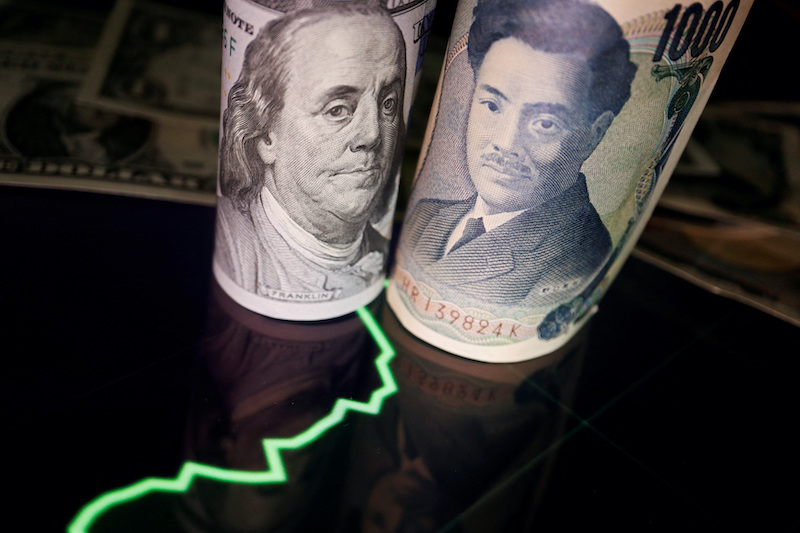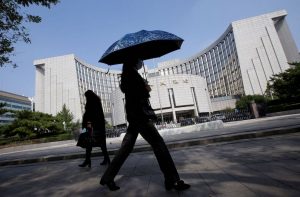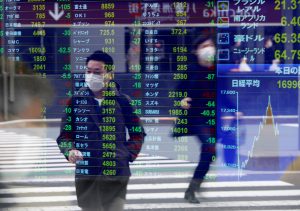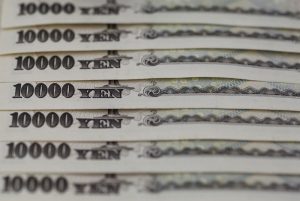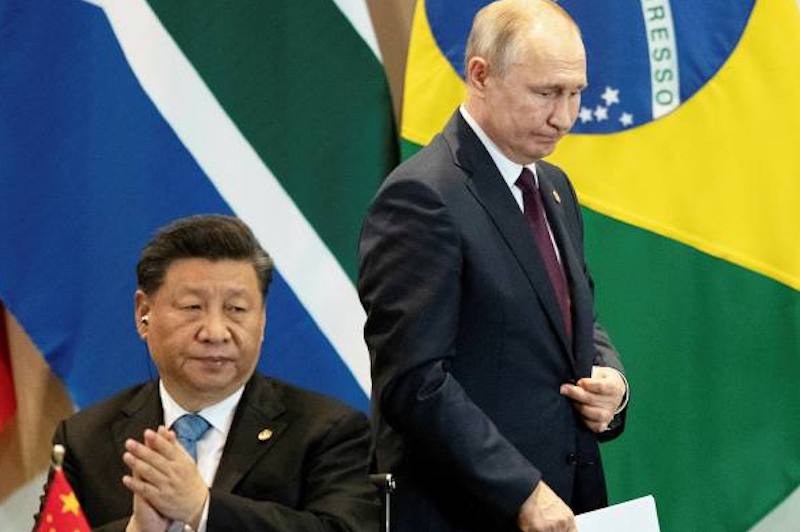The Japanese yen looked set for its best week in more than a year on Friday, rising to a session high of 152.75 per dollar in Asian hours.
Major intervention by Tokyo this week appears to have lifted the currency from 34-year lows, close to a weekly gain of 3.5%, its highest since late 2022. It was last at 153.19 per dollar.
Traders were left on tenterhooks for any further huge swings after Tokyo is suspected to have spent a huge sum to support its currency this week – 9.16 trillion yen ($59.8 billion), as suggested by data from Bank of Japan (BOJ).
ALSO SEE: US Asks China to Declare AI Will Never Control Its Nuclear Arms
The Bank of Japan was believed to have intervened in the market twice in four days this week, according to a report by the FT, with traders estimating it spent roughly $59 billion to bolster its strength, “but they failed to ease concerns about the currency” and its ageing, shrinking economy.
“The pace of the currency’s depreciation and dim prospects of reversing the trend have alarmed consumers, prompting them to cut spending and undermining the Bank of Japan’s efforts to normalise policy after years of keeping rates below zero,” it said.
Japan’s latest forays into the currency market came during periods of thin liquidity, with the country out for a holiday on Monday while the second attempt happened late on Wednesday after Wall Street had closed.
“Unless the Fed takes its foot off the brakes, Japanese policymakers may be face an uphill task of trying to reverse yen weakness,” said Vasu Menon, managing director of investment strategy at OCBC.
“What the MOF probably wants is to prevent markets from taking a one way bet on the yen, establishing a downtrend and causing it to weaken sharply.”
The yen has risen nearly eight yen against the dollar since the start of the week, when it first slid past the key 160 per dollar level, which some said could have been a line in the sand for authorities.
Dollar near its worst week in 2 months
Elsewhere, the dollar lost ground against most of its peers and was headed for its worst week in nearly two months, in part due to the sharp rise in the yen this week.
Traders are now looking to US nonfarm payrolls data due later on Friday to guide the dollar’s next moves, after Federal Reserve chair Jerome Powell told markets this week the central bank’s next move in interest rates would likely be down, and not up as some had feared.
The Fed held interest rates steady at the conclusion of its two-day monetary policy meeting, as expected, and signalled it is still leaning towards eventual rate cuts, even if they may take longer to come than initially expected.
The euro ticked up 0.08% to last trade at $1.0733, and was eyeing a weekly gain of nearly 0.4%. Sterling rose 0.12% to $1.2551 and was similarly set to rise more than 0.4% for the week.
Against a basket of currencies, the dollar, which has struggled to regain its footing in the wake of the less-hawkish-than-feared Fed comments, edged 0.06% lower to 105.24.
The dollar index was on track to lose nearly 0.8% for the week, its worst performance since March.
“Recent Fed speech has acknowledged the lack of progress on inflation and the desire to maintain the current level of policy rates for longer. That said, it does seem clear the Committee remains biased to cut rates, but any policy easing will be determined by how inflation develops over the next few months,” Tai Hui, APAC chief market strategist at JP Morgan Asset Management, said.
“We now expect the Committee to reduce rates 1-2 times this year, with risks skewed to fewer cuts.”
Down Under, the Australian dollar edged 0.14% higher to $0.6575, and was on track to gain more than 0.6% for the week.
The New Zealand dollar tacked on 0.13% to $0.59695, and was eyeing a 0.5% weekly gain.
- Reuters with additional input and editing by Jim Pollard
NOTE: The headline of this report was amended and content added re BOJ spending to bolster the yen on May 3, 2024.
ALSO SEE:
Japan Will Prop Up Yen Until Freefall Risk Fades: Ex-BoJ Chief
Japan, Korea, US Agree Forex Cooperation As Yen, Won Dive
China’s Yuan Leapfrogs Yen in Global Payments Rankings – FT
Yen, Inflation Stresses ‘Could Force BoJ to Tighten This Year’
Japan’s Nikkei Jumps, While Yen Stabilizes After Official Warning
Japan Silent on Yen Intervention as Currency’s Slide Continues




